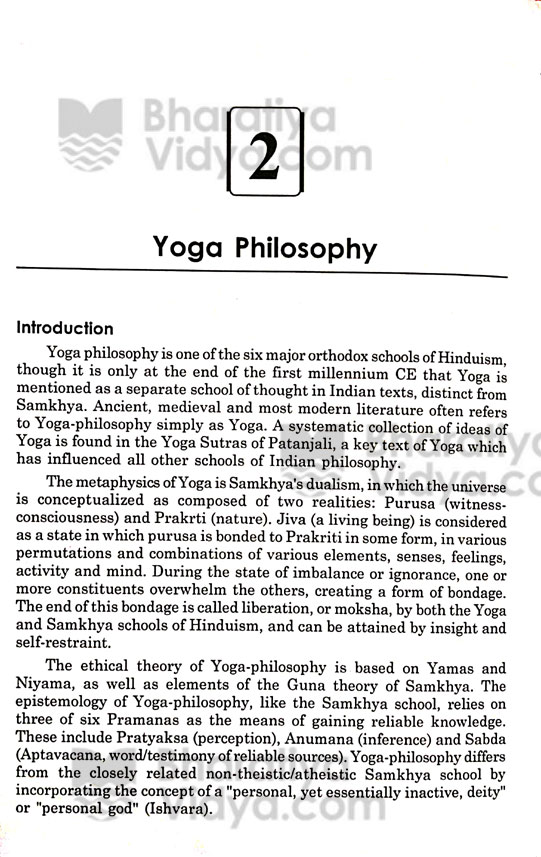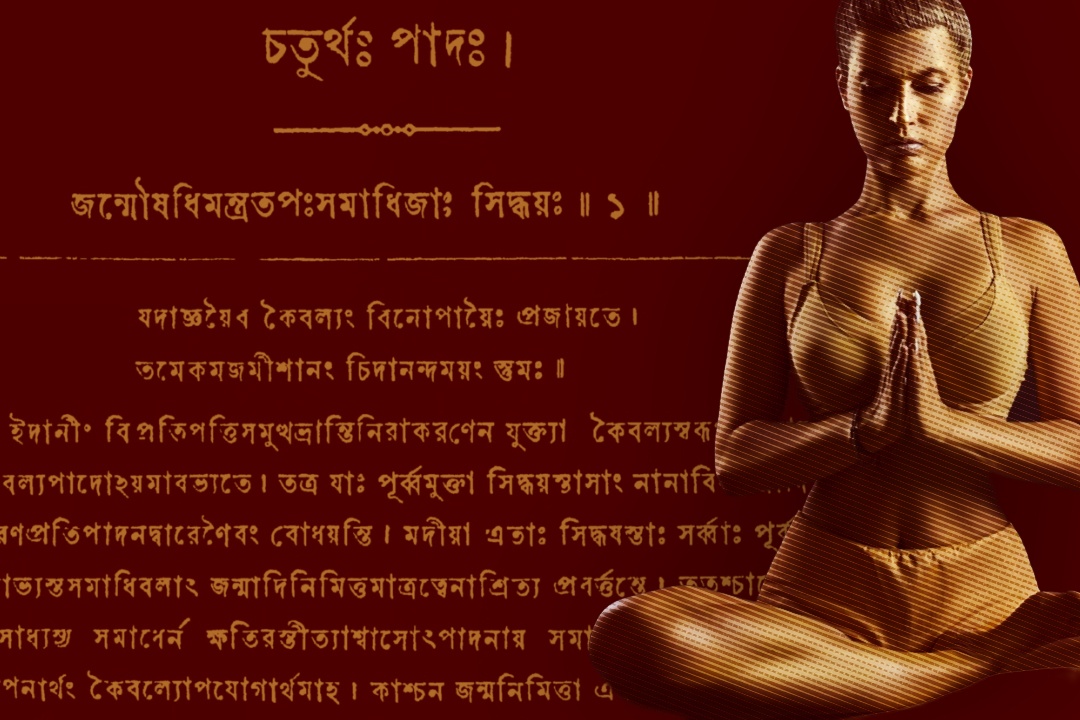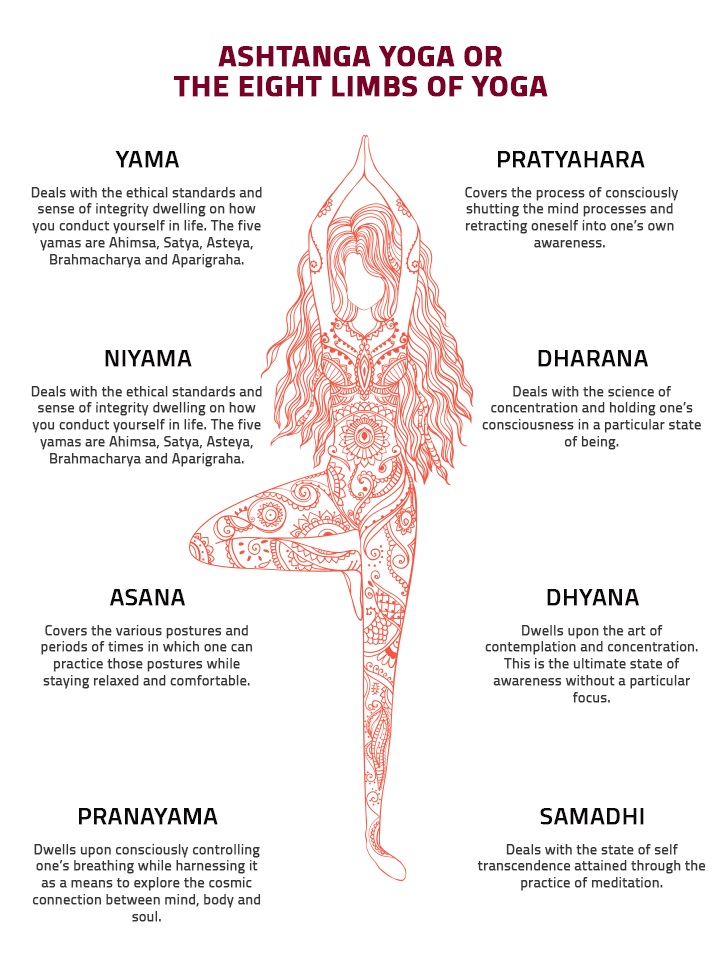Key Historical Milestones in Yoga
Yoga, a profound practice with deep roots in ancient Indian philosophy, has evolved over thousands of years into a versatile discipline embraced worldwide. The yoga philosophy and history encompasses an intricate weave of cultural influences, spiritual explorations, and practical applications that have transformed the understanding and practice of yoga through various epochs. From its enigmatic beginnings in the Indus-Sarasvati civilization to the modern interpretations that adorn contemporary society, this journey is rich with innovation and tradition.
In this exploration, we will delve into the key milestones that have shaped yoga, examining its origins, philosophical underpinnings, historical developments, cultural influences, and the ways it has adapted to meet the needs of practitioners today. By tracing its trajectory, we can appreciate how yoga has not only been a means of physical exercise but also a comprehensive system for mental, emotional, and spiritual well-being.
The Indus-Sarasvati Civilization

The origins of yoga can be traced back to the ancient Indus-Sarasvati civilization, which flourished in what is now modern-day India and Pakistan around 2500 BCE. This civilization is renowned for its advanced urban planning and sophisticated culture, which laid the foundation for many aspects of Indian life, including spiritual practices like yoga.
Evidence of early yogic traditions from this era can be found in archaeological sites such as Mohenjo-Daro. Seals depicting figures in meditative postures suggest that the practice was already integrated into the spiritual lives of the people. These figures often exhibit body positions reminiscent of contemporary yoga poses, indicating a continuity of practice that transcends millennia. The emphasis on meditation and contemplation highlights the significance of inner experience, showcasing how the seeds of yoga philosophy and history were planted long before written texts emerged.
These early manifestations of yoga were closely tied to the broader spiritual and philosophical currents of the time, intertwining with elements of animism and shamanistic practices. The focus on meditation practices and yoga began here, setting a precedent for future developments in yogic philosophy.
Vedic Contributions to Yoga

As we transition from the Indus-Sarasvati civilization into the Vedic period, we encounter a significant evolution in the understanding of yoga. The Vedas, ancient sacred texts composed around 1500-500 BCE, are foundational to Hindu philosophy and provide insight into early yogic practices. Within these texts, we find references to meditation, rituals, and the quest for ultimate truth, all essential aspects of yoga.
The influence of Vedic teachings permeated later yogic traditions, particularly in their approach to the divine and the nature of existence. Concepts such as Brahman (the universal consciousness) and Atman (the individual soul) became central themes, fueling the dialogue between the self and the cosmos. This philosophical framework encouraged practitioners to seek unity through various forms of yoga meditation, cultivating a deeper understanding of their place in the universe.
Additionally, the emergence of the Upanishads, mystical texts that delve into meditation and metaphysics, marked a pivotal shift in the development of yoga. They emphasized introspection and direct experience of the divine, fostering a more personal relationship with the sacred. Herein lies the essence of definition of meditation in yoga: a tool for transcending the mundane and achieving higher states of consciousness.
Classical Yoga Development

As we explore the classical period of yoga, spanning approximately from the 2nd century BCE to the 5th century CE, we encounter seminal figures who significantly influenced yogic thought and practice. Among them is Patanjali, whose Yoga Sutras serve as a cornerstone of classical yoga philosophy. His work systematically outlines the eight limbs of yoga—Ashtanga Yoga—which present a holistic approach to attaining enlightenment.
Patanjali’s contributions fostered the notion that yoga extends beyond mere physical postures; it encompasses ethical precepts, meditative practices, and profound insights into the mind’s workings. The systematic presentation of these ideas provided a framework for aspiring yoga students, guiding them towards self-realization and liberation. In this light, the goal of Yoga becomes clear: the unification of the individual self with the universal consciousness.
Furthermore, during this period, other schools of yoga began to emerge, each offering unique perspectives and methodologies. Raja Yoga, characterized by its emphasis on meditation and control of the mind, and Hatha Yoga, focusing on the physical body, exemplify the diversity within classical yoga. These variations catered to different temperaments and preferences, allowing practitioners to choose paths that resonated with their individual journeys.
Influences on Yoga Practice
Throughout history, yoga has been shaped by numerous cultural and philosophical influences, each contributing to its rich tapestry. One significant impact arose during the Gupta Empire, when the flourishing of arts and sciences promoted a renewed interest in spirituality and yoga. The influential texts of this era, including the Bhagavad Gita and the Yoga Vasistha, encapsulated the evolving understanding of yoga, merging philosophical discourse with practical instruction.
In addition to indigenous influences, interactions with Buddhism played a crucial role in the evolution of yoga. As Buddhism spread across the Indian subcontinent, its meditative techniques and philosophies merged with existing yogic practices. This cross-pollination enriched the landscape of yoga, leading to the development of Tantric yoga, which emphasizes ritual, visualization, and energy work.
Moreover, the arrival of Islamic philosophy during medieval times introduced new perspectives on spirituality and devotion, further diversifying yogic practices. The interplay between Hindu and Islamic thought fostered an environment of mutual exchange, resulting in innovative approaches to yoga that transcended sectarian boundaries. The eclectic nature of yogic philosophy reflects this synthesis, inviting practitioners to explore diverse paths while remaining centered on core principles.
Postclassical Yoga Trends
Transitioning into the postclassical period, spanning from the 9th to the 19th centuries, we witness a transformation in yoga practices and philosophies. This era marked a departure from the rigid structures of classical yoga, embracing a more flexible and experiential approach. Various yoga traditions began to flourish, each emphasizing distinct techniques and philosophies tailored to address the needs of their followers.
One notable development was the emergence of Hatha Yoga, which brought a renewed focus on the physical body and breath. This style of yoga became synonymous with postural practice, laying the groundwork for the modern yoga we recognize today. Through the refinement of breathing techniques and physical postures, Hatha Yoga aimed to purify the body and prepare it for deeper meditative experiences.
During this period, important figures such as Swami Sivananda and Swami Vivekananda played pivotal roles in reintroducing yoga to the masses. Their teachings emphasized the importance of integrating yoga into daily life, fostering a deeper connection to one’s spiritual essence. As yoga gained popularity, it began to be perceived not merely as a religious or esoteric pursuit but as a holistic lifestyle encompassing health, wellness, and self-realization.
Modern Interpretations of Yoga
In modern times, yoga has undergone a remarkable transformation, adapting to contemporary lifestyles while staying rooted in its ancient wisdom. The rise of the 20th century witnessed the globalization of yoga, as teachers like B.K.S. Iyengar and Pattabhi Jois popularized their methods, bringing attention to the physical aspects of yoga practice. The proliferation of beginners yoga courses and yoga programs for beginners made yoga accessible to a wider audience, breaking down barriers that once limited its reach.
Today’s yoga is characterized by a diverse array of styles and interpretations, catering to varied interests and preferences. From power yoga to yin yoga, practitioners can choose paths that resonate with their personal goals. The rise of technology has further transformed the landscape of yoga, making online classes and virtual workshops readily available, thus expanding its accessibility.
However, amidst this commercialization, there remains a strong undercurrent of traditional teachings. Many practitioners seek to reconnect with the yoga philosophy and history, exploring the deeper dimensions of their practice beyond mere physical fitness. This resurgence of interest in the philosophical and spiritual aspects of yoga reflects a desire for holistic well-being, integrating the body, mind, and spirit.
Essential Philosophical Concepts
At the heart of yoga lies a rich tapestry of philosophical concepts that guide practitioners on their journeys. Understanding these concepts is crucial for anyone seeking to integrate yoga into their lives meaningfully. Fundamental to yogic philosophy is the interplay between the material and spiritual realms, highlighting the interconnectedness of all beings.
One essential concept is Dharma, or the duty to live in accordance with one’s true nature. Embracing this principle encourages individuals to act from a place of authenticity, aligning their actions with their inner values. By recognizing their unique contributions to the world, practitioners cultivate a sense of purpose that enhances their overall well-being.
Another vital concept is Maya, the illusion that obscures our understanding of reality. Through yoga practices, individuals learn to navigate this illusion, uncovering deeper truths about themselves and the universe. As they delve into meditation and self-inquiry, they become better equipped to discern their thoughts, emotions, and beliefs, ultimately leading to greater self-awareness and clarity.
By exploring these philosophical tenets, practitioners can deepen their understanding of yoga’s transformative potential. The cultivation of mindfulness, compassion, and wisdom fosters a richer experience of life, encouraging individuals to embrace challenges and growth with grace.
Patanjali’s Yoga Sutras
Patanjali’s Yoga Sutras, composed in the 2nd century BCE, remain one of the most revered texts in the yogic canon. This concise compilation distills the essence of yoga philosophy into aphorisms, outlining the path to self-realization through disciplined practice. Patanjali’s insights emphasize the importance of both ethical conduct and contemplative practices, weaving together the threads of morality, meditation, and physicality.
Central to the Yoga Sutras is the concept of Chitta, which refers to the mind-stuff or consciousness. Patanjali elucidates the fluctuations of the mind and offers tools to still these disturbances through practices like Pranayama (breath control) and Dhyana (meditation). By mastering these techniques, practitioners can transcend the limitations of the ego and access a state of pure awareness.
Moreover, Patanjali introduces the idea of the Kleshas, the obstacles that hinder spiritual progress. Acknowledging these afflictions—ignorance, egoism, attachment, aversion, and fear of death—allows practitioners to identify and confront the root causes of their suffering. This analytical approach empowers individuals to take responsibility for their growth, fostering resilience and determination on their yogic journey.
In essence, Patanjali’s Yoga Sutras serve as a roadmap for those seeking liberation and self-discovery. By engaging with these teachings, practitioners gain valuable insights into the nature of the mind, enabling them to cultivate harmony and balance in their lives.
Psychological Frameworks in Yoga
The intersection of yoga and psychology has garnered increasing interest in recent years, revealing the profound effects of yogic practices on mental health. Contemporary research highlights the psychological benefits of yoga, demonstrating its efficacy in reducing stress, anxiety, and depression. By fostering mindfulness and self-awareness, yoga equips individuals with valuable tools to navigate life’s challenges.
Through various meditation practices and yoga, individuals can develop greater emotional regulation and resilience. The intentional focus on breath and movement cultivates a heightened sense of presence, allowing practitioners to anchor themselves in the moment. This practice of grounding oneself can be instrumental in alleviating symptoms of anxiety and promoting mental clarity.
Moreover, the emphasis on self-compassion and acceptance inherent in yoga creates a nurturing space for healing. As individuals engage with their thoughts and emotions without judgment, they cultivate a compassionate relationship with themselves. This gentle approach encourages individuals to embrace their imperfections, fostering a sense of belonging and connectedness.
Integrating therapeutic techniques with yogic philosophy enriches the practice, creating a holistic framework for mental health. By addressing both the physical and emotional dimensions of well-being, yoga offers a multifaceted approach to healing and transformation.
Types of Yoga
With its rich history and diverse influences, yoga encompasses a wide variety of styles and approaches, each offering unique benefits and experiences. Understanding these different types provides practitioners with the opportunity to explore various avenues of practice and discover what resonates most profoundly with their individual journeys.
Raja Yoga, often referred to as the “royal path,” focuses on meditation and self-control as the primary means of attaining enlightenment. Its practices center on mastering the mind and cultivating inner peace through dedicated meditation sessions. Raja Yoga encourages practitioners to delve deeply into their consciousness, unveiling layers of awareness that lead to self-discovery.
Hatha Yoga, on the other hand, places emphasis on physical postures and breathwork. It serves as a foundation for many modern yoga styles, incorporating various breathing techniques and asanas (poses) to enhance physical strength and flexibility. Hatha Yoga invites practitioners to connect with their bodies, fostering awareness of movement and alignment while preparing them for deeper meditative experiences.
Karma Yoga, known as the path of selfless action, emphasizes the importance of performing one’s duties without attachment to the outcomes. This practice nurtures a sense of service and compassion, encouraging individuals to contribute positively to the world around them. Through Karma Yoga, practitioners learn to find joy in the act of giving, transcending the ego-driven desire for recognition.
Each type of yoga presents a unique lens through which practitioners can explore their spirituality and well-being. By experimenting with different styles, individuals can tailor their practice to align with their goals, whether they seek physical fitness, emotional stability, or spiritual awakening.
Benefits of Yoga
The myriad benefits of practicing yoga extend beyond the physical realm, encompassing emotional, mental, and spiritual dimensions. Engaging in regular yoga practice fosters holistic health, promoting well-being on multiple levels. From enhancing flexibility and strength to cultivating mindfulness and inner peace, the advantages of yoga are vast and impactful.
Holistic health benefits manifest as individuals develop a deeper connection to their bodies and minds. The integration of asanas, pranayama, and meditation cultivates awareness of bodily sensations, thoughts, and emotions. This heightened awareness allows practitioners to make conscious choices that support their overall health, creating a harmonious balance between body, mind, and spirit.
Moreover, yoga has shown positive effects on various bodily systems, including cardiovascular health, respiratory function, and musculoskeletal integrity. Research indicates that consistent practice can lower blood pressure, reduce chronic pain, and improve overall physical fitness. As individuals engage in yoga, they often report increased energy levels and improved sleep quality, contributing to a greater sense of vitality.
In modern medicine and healthcare, yoga is increasingly being recognized as a complementary approach. Healthcare professionals incorporate yoga into treatment plans for conditions such as anxiety, depression, and chronic pain. The incorporation of yoga meditation for beginners into therapeutic settings underscores the growing acknowledgment of yoga’s potential to promote holistic healing and enhance the quality of life.
Misconceptions About Yoga
Despite its widespread popularity, yoga is often misunderstood, leading to misconceptions that can hinder individuals from fully experiencing its benefits. One common misconception is that yoga is solely about physical postures, reducing it to a mere form of exercise. While asanas play a significant role, yoga encompasses a much broader spectrum of practices, including meditation, breathing techniques, and ethical principles.
Another misconception revolves around the idea that yoga is exclusively for the young, fit, and flexible. In reality, yoga is accessible to individuals of all ages, body types, and fitness levels. The beauty of yoga lies in its adaptability; practitioners can modify poses and practices to suit their unique needs and abilities. This inclusivity promotes a sense of belonging and empowerment, inviting everyone to embark on their own yoga journey.
Furthermore, some view yoga as a strictly religious practice, associating it solely with Hinduism. While yoga has roots in Hindu philosophy, it transcends any single belief system. People from diverse backgrounds and spiritual paths embrace yoga, finding common ground in the pursuit of self-awareness, mindfulness, and well-being. This universality invites practitioners to explore their spirituality in a way that aligns with their personal beliefs.
The Importance of Continuous Learning in Yoga
As the practice of yoga evolves, so too does the need for continuous learning and exploration. Engaging with new teachings, styles, and philosophies fosters growth and deepens understanding. For practitioners, ongoing education is essential to cultivate a rich, meaningful practice that adapts to their changing needs and aspirations.
Participating in workshops, retreats, and training programs allows individuals to expand their knowledge and refine their skills. Immersive experiences provide opportunities to learn from experienced teachers, exchange insights with fellow practitioners, and deepen one’s connection to the yogic community. This collaborative aspect of learning enriches the practice, fostering a sense of camaraderie and shared purpose.
Moreover, continuous learning encourages practitioners to critically examine their beliefs and assumptions about yoga. Engaging with a variety of perspectives allows individuals to challenge preconceived notions and embrace a more nuanced understanding of the yoga philosophy and history. By remaining open to new ideas and experiences, practitioners cultivate a spirit of curiosity and exploration that enhances their journey.
In today’s fast-paced world, cultivating a mindset of lifelong learning ensures that yoga remains a dynamic and evolving practice. As individuals commit to expanding their understanding of yoga, they open themselves to new possibilities for growth, healing, and transformation.
Educational Resources and Courses in Yoga Philosophy
For those seeking to deepen their knowledge of yoga philosophy, a wealth of resources is available to support their educational journey. Books, online courses, and workshops offer invaluable insights into the rich tapestry of yogic thought and practice. Whether one is a seasoned practitioner or a beginner, resources abound to facilitate exploration and growth.
Books authored by renowned teachers and scholars illuminate various facets of yoga philosophy, providing readers with foundational knowledge and profound insights. Texts such as the Yoga Sutras of Patanjali, the Bhagavad Gita, and the Upanishads serve as cornerstones of yogic literature, inviting readers to engage with timeless wisdom.
Online platforms also offer a plethora of courses on yoga philosophy, catering to diverse interests and skill levels. These programs often blend theoretical study with practical application, allowing participants to integrate philosophical concepts into their daily lives. Engaging in such courses fosters a deeper appreciation for the complexities of yoga while offering practical tools for personal growth.
In addition to formal education, attending workshops and retreats allows individuals to immerse themselves in yogic teachings in a supportive environment. Connecting with experienced instructors and like-minded peers can inspire new insights and rekindle passion for practice.
Conclusion
The journey through the yoga philosophy and history reveals a rich and intricate tapestry woven from diverse cultural influences, spiritual teachings, and evolving practices. From the ancient depths of the Indus-Sarasvati civilization to the modern reinterpretations that populate today’s landscape, yoga continues to thrive as a multifaceted discipline that addresses the physical, mental, and spiritual aspects of human existence.
As we engage with the historical milestones of yoga, we come to appreciate the depth of its teachings and the transformative potential it holds. By cultivating mindfulness, embracing diverse practices, and committing to continuous learning, practitioners can unlock the profound benefits of yoga, forging a path toward self-discovery and holistic well-being. Ultimately, the practice of yoga invites us to embark on a journey of exploration, cultivating a deeper connection to ourselves, others, and the world around us.
